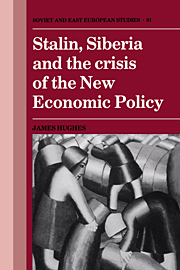Summary
The Pyrrhic victory in the civil war and the collapse of the War Communism strategy for a quick transition to socialism left the Bolshevik party engulfed by several critical problems; the country was on the verge of economic and social disintegration, the party was becoming increasingly isolated from any social base of support, and a culture of authoritarianism gripped the political administration. In order to temporarily alleviate these problems and secure the tactical survival of the goals of the October Revolution, Lenin imposed the NEP model of development on the party at the Tenth Congress in March 1921. This combined an entrenchment of the party's political monopoly with a retreat to a mixed economy of extensive state ownership coexistent with small scale capitalist enterprises and a market relationship with individual peasant producers. As for Lenin's conceptualisation of NEP, it is clear that he regarded it as a stopgap prescription for the difficulties facing the new regime and envisaged that at some future point, once the economy had been sufficiently resuscitated, the advance on the road of ‘building socialism’ would be renewed. In the meantime, the aim of party policy towards the peasants was to capture and subject them to political control by expanding state authority, party membership and cooperative institutions in rural areas.
The Siberian countryside under NEP
The peculiarities of Siberian agriculture in the 1920s were a double edged sword for the party. In contrast to other regions, the conditions in Siberia were ripe for a rapid resurgence of agricultural production under NEP because of the healthy economic state of the local peasantry.
- Type
- Chapter
- Information
- Stalin, Siberia and the Crisis of the New Economic Policy , pp. 205 - 212Publisher: Cambridge University PressPrint publication year: 1991



